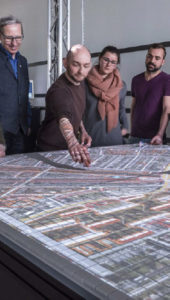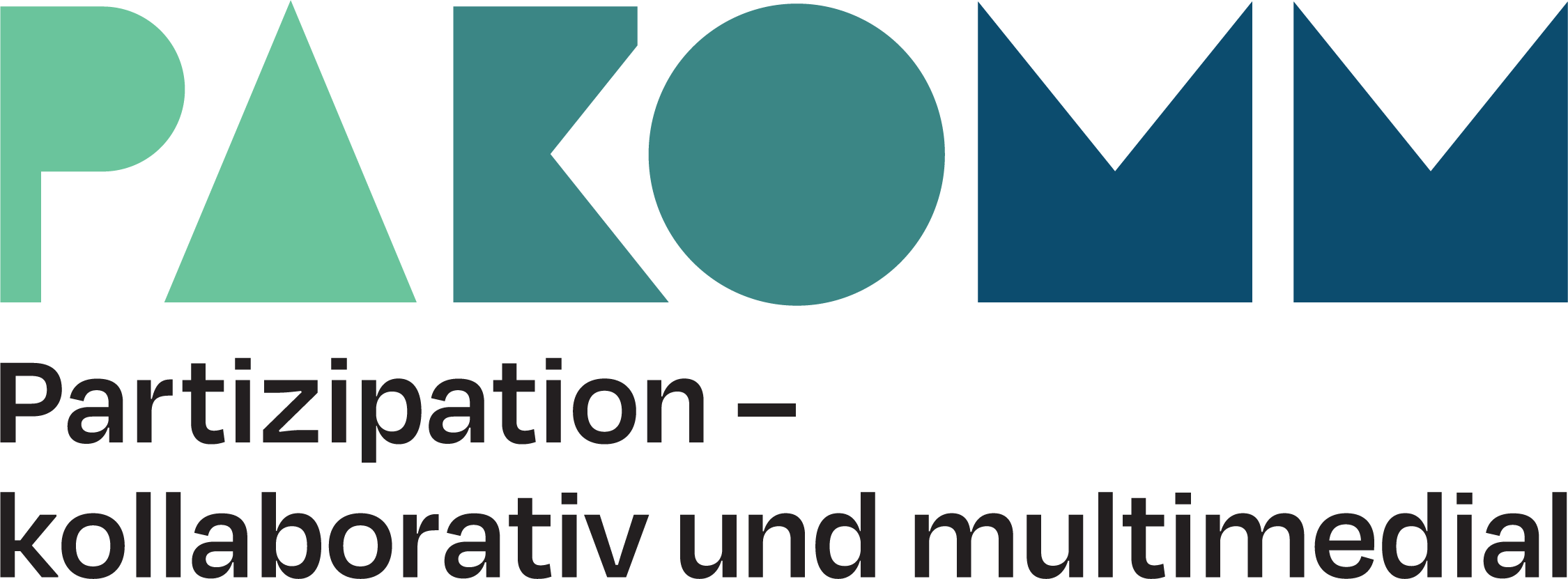 Project goals
Project goals
The PaKOMM project develops visualisation tools and workflows that can be used by various actors in urban research. A collaborative and multimedia approach is intended to make a significant contribution to more effective and efficient decisions in participation processes. The insights gained in this way will also
influence what the digital city of the future can look like.
The project designs and tests application-specific, integrative solutions that – together with the use of mixed reality techniques and elements of gamification – enable added value in the participation process. With a focus on good design and usability, multimedia visualisation forms are to be sensibly combined and dynamically adapted to specific participation tasks, collaboration scenarios and the end devices used.
Increased reach generates a larger volume of data from citizens’ contributions, which exceeds the evaluation capacities of the planning offices. Machine learning and natural language processing methods will be used to automate the analyses of the participation processes in order to quickly extract the key messages and critical points.
Participation

Over the past 15 years, digital technologies and new methods have been increasingly incorporated into participation processes. The early, comprehensive and transparent involvement of city residents can create greater acceptance and enable more efficient processes. However, the current level of participation in citizens’ decisions is not representative, as young people in particular do not get involved. Furthermore, the processes are characterized by a rather academic population. By focusing on design and usability, the aim is to appeal to young, technology-savvy groups of people as well as the older generation, who are increasingly using smartphones.
Collaborative
Current methods of participation often rely either on on-site procedures, which invite participation on site, or on online procedures, which enable engagement independent of time and place. Integrated approaches, such as those developed in the DIPAS project of the City Science Lab (HCU) and the City of Hamburg, can prevent media discontinuity.
The PaKOMM project also looks at spatially separated/combined, temporally synchronous/asynchronous
and moderated/unmoderated approaches to collaborative participation. The project ties in with current multi-user MR developments such as collaborative virtual environments.To ensure that users only receive the information that is relevant for solving a specific task and to avoid distractions caused by details, meaningful
depth of information is determined for a multi-scale approach. As a rule, various forms of visualization (e.g. diagrams, aerial and satellite images, videos or animations) are displayed on monitors, city scopes (interactive “data tables”) or, more recently, through mixed reality. To date, these forms of presentation have only been used in isolation. The aim of this project is to investigate their combined use in the form of a parallel or sequential arrangement.
This interdisciplinary project combines expertise from the fields of cartography/visualization, urban research (both HCU) and digital reality (HAW Hamburg) and is funded by the Hamburg Ministry of Science, Research and Equality (BWFG).

